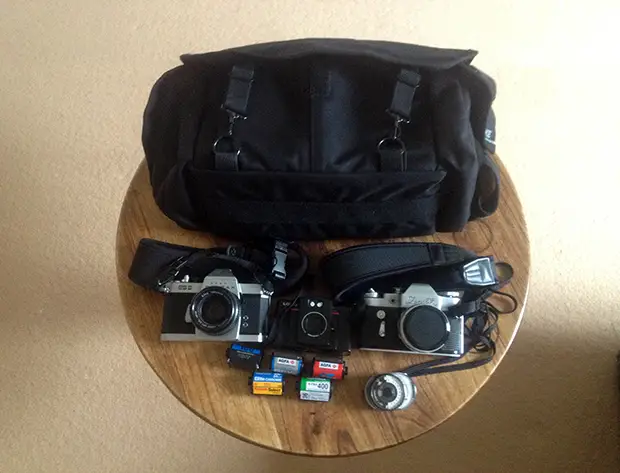Interview with Maggy van Eijk
Welcome back to London-based photographer Maggy van Eijk, who shoots mostly film and shared her loves for film photography with us here before. Today, we asked Maggy more about her work and her passion for film photography.
I’m a twenty three year old living in London. Originally from The Netherlands, I’ve lived all over the place but I’m hoping to stay in London for as long as my restlessness will let me.
I work as a writer for a student website and I have a vast collection of hobbies but I tend to focus on poetry and photography.
How did you get started and interested in film photography?
I started with digital and then my grandfather gave me his Minolta X-GE, which is still my favorite one to use.
I see it as a friend I’m always fighting with but when we somehow work together the results are awesome and make the struggle completely worth it. The camera is a bit broken and rusty and I currently have to wind it with a 5p coin but it totally fits my haphazard personality. Things that are broken are always more interesting, perfection is a snooze.
Tell us what was your first film camera?
The Minolta was my first and then my friend, a fellow film fanatic, told me about a shop in Holland that sells amazing second hand film cameras. The journey there was an adventure itself; we went on this epic bike ride in the summer heat. The shop sold me a Pentax P30 with a beautiful lens. I’ve also got a point and shoot Pentax I found in Denmark but I’ve stashed it away on the naughty shelf because it won’t focus properly. I also have a Diana F+ and a Canon EOS 1000F that my brother helped me bargain for at a flea market in Amsterdam.
You know those crazy cat ladies that surround themselves with cats? Well, that’s me but substitute cats for cameras.
Who are your favorite film photographers?
These are constantly changing. The great thing about Flickr is that you have unlimited access to the best artists all over the world. I’m completely amazed by young girls like Olivia Bee that are rocking the photography world right now. I think it’s really cool how young women are reclaiming feminine imagery rather than sitting back and weeping about fashion magazines that are making us feel bad. Who cares about the media when you can go out, run around in the woods and take pictures of you and your friends?
What gives you inspiration?
I change up my photography depending on how I feel. A couple weeks ago I was bed-ridden with heartbreak and I just wanted to be alone. My friend forced me outside and we went out to London’s Southbank and just took pictures of strangers and street artists and old men selling caramelized peanuts. It was great, I didn’t have to set anything up or worry whether or not my subject was having fun. It made me appreciate how lucky I am to live in London and I left my bed, which is always a good sign.
I think, people in general are inspiring to me; photo shoots are a great excuse to hang out with people I love and be silly and out doors. I’ve done paid photography work before and I hated it. It was too stressful and I was constantly worrying about getting the right shot for the client. I prefer to keep photography as creative outlet that I just do for me, no one else.
I suppose another point of inspiration is my bizarre obsession with Portland, Oregon. I’ve never been there and I’m always tucking away loose change in the hope to go there one day. It started because of Flickr, whenever I’d stumble on a photograph I really liked I would check out the Geo-tag, my favourite photos are somehow always taken there. It’s a really strange coincidence. I like to recreate that vast nature type feel where landscape completely swallows you, but living in London makes that a little difficult.
Do you have any tips for someone who’s just picking up a film camera?
Just go out and learn as you go. I went on holiday to Venice and Barcelona shortly after my grandfather gave me his Minolta. It was a really exciting trip and I was eager to capture every second of it. However, the first problem started because I couldn’t load the film and a kind man sitting next to be on the plane helped me out. Once I started shooting I thought I’d gotten some great shots until I had them developed and none of them had worked out. Next time I used the camera I got maybe two photos out of it, next time a couple more and then eventually I got the hang of it became this amazing rush. It was worth the long and expensive learning process.
I could have cut some corners by reading the manual. I probably should have done that.
Maggy, thank you so much for the interview.














